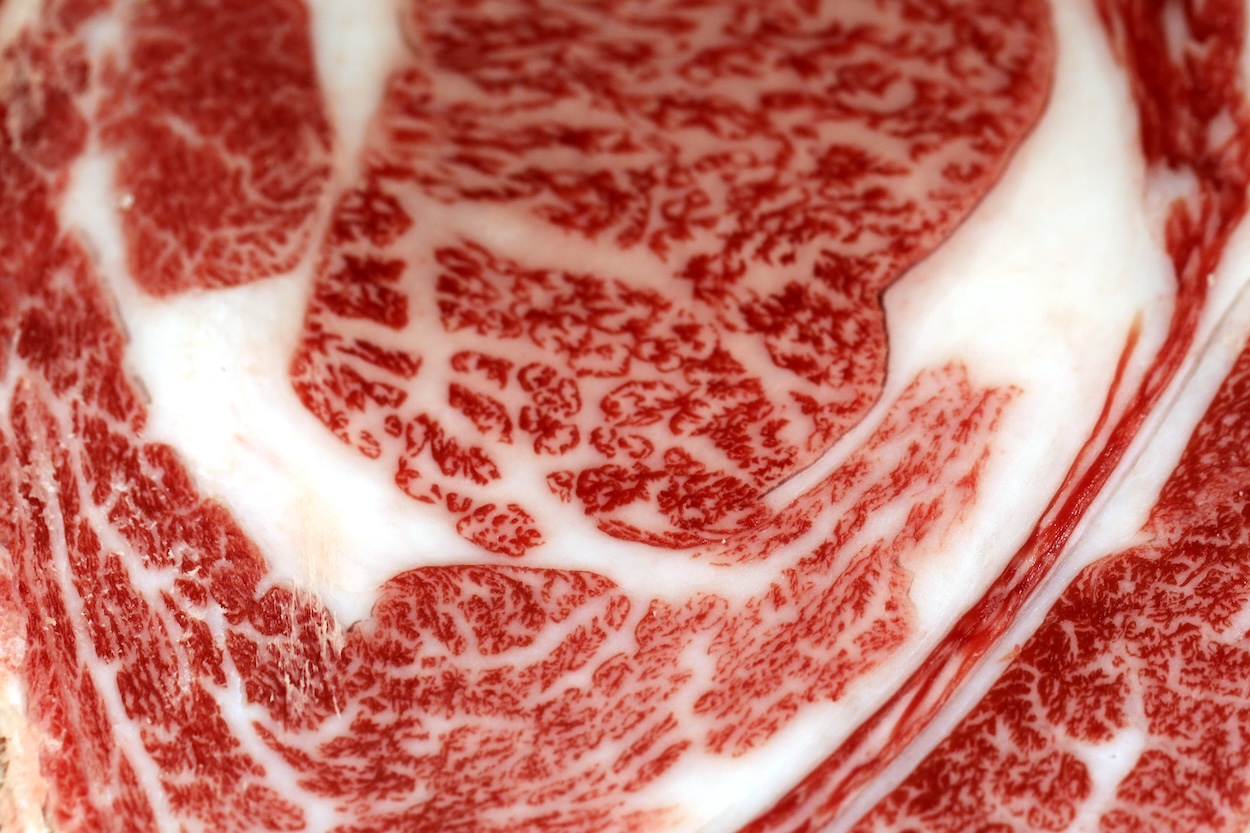A colleague took me out to dinner recently, repaying a favour. Ben likes his steak and we ended up at some high-end joint in Mayfair. Unsure what to order, I left it to him and was served Wagyu beef, which literally translates as ‘Japanese cow’. When it came, it was pale in colour with lines of fat running all the way through. It didn’t look like steak. Nor did it cut like one – I probably could have used a spoon.
Worst of all, it didn’t taste like one. It was a bit like eating solidified grease that required no chewing and left a funny kind of aftertaste. More foie gras than steak – not just in terms of flavour and texture, but also in terms of force feeding. Yes, Wagyu cattle are force fed, despite the commonly held belief that they are treated like guests in a five-star hotel.
Welcome to the world of luxury beef. The cows supplying some of the most expensive beef on the planet are massaged daily to reduce stress and stiffness, and to produce a more tender meat. They are also fed a special diet. Some farmers even play classical music for the cows – the poor things.
Fortnum & Mason will take £54.95 from you in return for two 280g steaks while Aragawa, a Japanese joint in Mayfair, is selling a single 14oz Wagyu steak for around £900. But if you’d like to try Wagyu on a budget, Waitrose stocks burgers at £6.20 for two. Although all they taste of is fat.
The fat is greasy, rather than rich. The idea of eating it raw – sushi or carpaccio style – makes me feel a little sick. Like many other high-end ingredients, such as lobster, it disappoints. It’s a status symbol – albeit one that now appears to be everywhere.
The marketing stunts surrounding Wagyu are ridiculous; there’s even a myth that the cows are fed beer. Leaving aside the fact that this would be incredibly cruel, what would it achieve – other than add to the machismo already so prevalent in steak houses?
It was a bit like eating solidified grease that required no chewing and left a funny kind of aftertaste
The ridiculous price tag does allow for showing off among high earners. Steak house chain Hawksmoor is always full of groups of men downing cocktails and beers and ordering the biggest steaks. Last time I was in one, there was much consternation from a group of eight who were berating the poor waiter for not having Wagyu on the menu. The fact that Hawksmoor prides itself on its British beef seemed to have entirely escaped them. That said, it’s no surprise that some British farmers have now cottoned on to the Wagyu craze and are producing the beef themselves.
What is it that makes Wagyu special enough to command the insane price tag of around £500 a kilo? Obviously each to their own but it feels a bit like posturing. Isn’t steak meant to be chewed? To taste of beef? To demand the sharp blade of a steak knife? To have a sensible ratio of fat to meat?
Wagyu is the same kind of ostentatious marker of wealth as a designer outfit, handbag or Rolex watch. But unlike other luxury goods, it’s actually worse than the thing it’s supposed to ‘elevate’. Wagyu turns an unappetising, insipid colour in the pan rather than browning.
The meal with Ben that day cost an arm and a leg – and it was wasted on me. Although I had requested the smallest steak available, by the time I’d finished it (I was obliged – he’d paid a fortune for it), I felt as if I’d eaten an entire cheesecake or giant tub of ice cream. So in addition to being overpriced, Wagyu leaves a nasty, sickly feeling behind. Give me an aged rib eye any day – preferably from a cow that turned its nose up at Mozart.








Comments